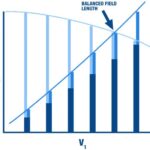Vx and Vy are one of the basic terms in studies of aircraft performance. These speeds are defined for the aircraft to plan the climb of aircraft under various circumstances. These speeds are aircraft specific. Aircraft manufacturer provides these speeds under Pilot Operating Handbook (POH) for that particular aircraft.
Best Angle of Climb Airspeed is defined for an aircraft at which it will achieve the best angle of climb. Vx speed is maintained during climb to clear obstacles. If an aircraft is departing from an area surrounding terrain Vx speed should be maintained till the obstacles are cleared.
- Best Angle of Climb Airspeed is denoted by “Vx”
- Vx gives greatest altitude gain in the shortest horizontal distance
- Higher climb gradient is achieved with higher angle of Climb
Best rate of Climb Airspeed is defined as the speed which gives maximum altitude gain in shortest time. For a same altitude the angle of climb when compared with that in case of Vx is shallower but time taken is less. Vy speed is compromise between aircraft’s vertical and horizontal speed component. It can be used when noise abatement is required or the particular airspace needs to be cleared as soon as possible.
- Best rate of climb speed is denoted by “Vy”
- Vy gives the greatest altitude gain in shortest time
Effect of Weight, Altitude and Temperature
The drag of an aircraft at a given IAS is not affected by altitude or temperature. But higher weight will increase drag and reduce excess thrust and consequently the climb angle.
Thrust available from the engine decreases with increasing altitude and increasing temperature which also reduces excess thrust. Climb angle therefore decreases with increasing weight, altitude and temperature.
| Factors | Rate of Climb | Angle of Climb |
| 1. Increase in headwind | Remains Same/ Constant | Increases |
| 2. Increase in tailwind | Remains Same/ Constant | Decreases |
| 3. Weight Increase | Decreases | Decreases |
| 4. Increase in Altitude/ Temperature/ Humidity | Decreases | Decreases |


